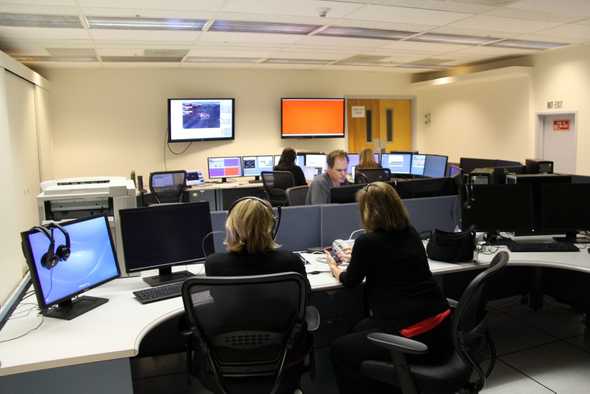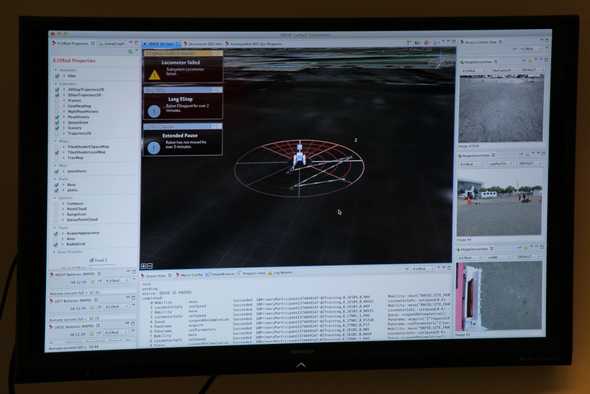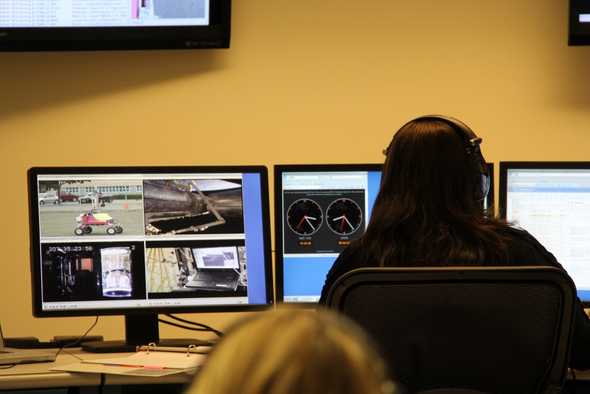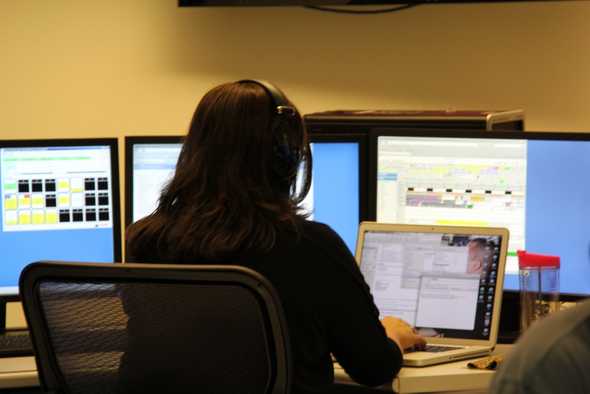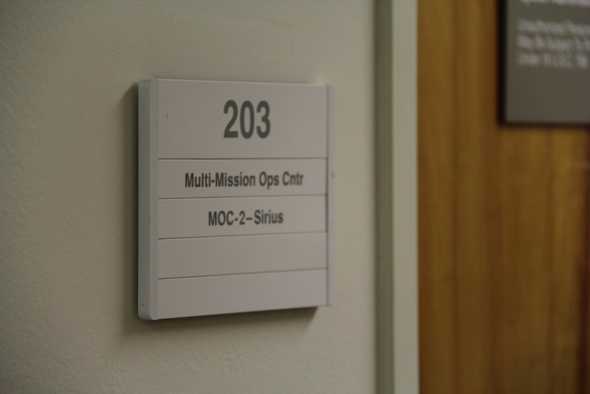Inside NASA Ames Mission Operations Center before rover test
Inside a bland grey concrete building at NASA Ames in Mountain View, named the Space Projects Facility, a team was communicating through a complicated secure network to an Astronaut living on the International Space Station. NASA was simulating a mission where a crew and a K10 planetary rover were on the far side of the moon.
A place where communication is made more complex as signals can’t be sent directly back to Earth. A place that few humans have been or seen with their own eyes. A place that is just on the other side of the moon that we see every night from Earth.
In room 203, called the Multi-Mission Ops Center, their objective was to have Astronaut Luca Parmitano control the rover and deploy an antenna on the surface called a roverscape. Was it possible to have no communication with the Mission Control Center (MCC) and have a crew be responsible for driving the rover to complete a task.
It is different from how the Mars Curiosity Rover is operated. That rover, nearing the first anniversary of landing on Mars, is controlled from the MCC at the Jet Propulsion Laboratory in Southern California. There are no humans even remotely near the rover. All the communication is tediously transmitted from Earth and takes about 14 minutes each way between planets.
Hanging on the wall of the MCC at Ames, several screens provided the team with critical information. One of them was the engineering screen, with information on how the rover was doing and a virtual model of the rover in its environment. It was similar to what Parmitano saw on his user interface flying 250 miles above Earth.
On another screen, a video feed from on board the ISS showed the user interface Parmitano was using to interact with the rover. Around the room, flat-screen computer monitors gave each team member other pieces of information as the mission was prepared.
This experiment was being conducted as a payload activity, so all the interaction went through the Marshall Space Flight Center (MSFC) in Huntsville, Alabama. That center is in charge of payload activities. Another NASA center, Johnson Space Center (JSC) located in Houston, Texas, was in charge of operating the vehicle. The Operation Lead at Ames, Maria Bualat, talked with the folks at MSFC who communicated with the crew on the ISS. She also communicated with the Operations crew at the roverscape, where the rover was located a few blocks away.
The communications between the rover and Astronaut Parmitano traveled through a secure WiFi network at Ames, over NASA’s mission network to JSC, over a landline to White Sand, NM, from a ground-based antenna to a satellite in geosynchronous orbit, and finally, to the ISS. That process took about 2-4 seconds.
The path from the MCC at JSC to the ISS is the typical way communications happen. Using the satellites in geosynchronous orbit allows around the clock coverage and communication with the ISS. If there was direct communication from the ISS to the ground, the communication would only be available a short amount of time as the ISS passes directly over the antenna.
On board, Astronaut Parmitano took his task seriously. He had completed his training that included reviewing procedures and playing with the controls to get accustomed to the user interface. They had also verified that the communication link was working. They were about to have a crew conference to answer any questions he had and go over the mission he was about to conduct. Then the mission was expected to begin.
The objective of the mission was to deploy one of the three antennas. Ideally, they would deploy all three if everything worked as planned. The rover would use pre-programmed scripts uploaded by Luca and execute each, step by step. The script is a set of step by step instructions like: drive here, start deploying the antenna, leading the rover along the mission that NASA wanted to execute.
Parmitano would also monitor the rover and ensure that the rover was deploying the antenna correctly, that there were no tears in the antennas, or that the rover didn’t get stuck with an obstacle like a rock. If the rover got stuck, Parmitano could manually control the rover around the obstacle and then tell it to resume the script. The Astronaut is there as a supervisor of the rover operations because the rover has a lot of autonomy built in.
As part of the experiment, the ground team can add challenges like a rock in the way to give Parmitano an opportunity to take over part of the simulation.
This was the second time NASA has performed a test controlling a rover remotely. The first time was on June 17th with Astronaut Chris Cassidy. That test was successful. The only problem experienced was an out of simulation problem where the rover had a failure at the end. Because it was at the end of the test, they were able to look at it and not affect the mission.
During that test, there were a number of in-simulation problems that were intentional to see how Cassidy dealt with them. Low battery readings were caused to see if Cassidy had situational awareness that they were appearing on the user interface. There were scripts that had the rover drive towards rocks that tested how Cassidy stopped the rover and took over control to drive around them. Cassidy handled those problems well.

